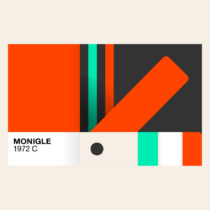Masters (of) Brand

The Masters is truly a sporting experience like no other, and this year reminded us all how special it can be. Everything about Augusta National is masterful. It’s been said that the lessons of golf are the lessons of life. If that’s true, The Masters gives us all life lessons in branding if we examine its experience, identity, culture and purpose–cornerstones.
The Masters is Like Any Good Brand
- It drives choice:People understand The Masters easily and they elect to travel, watch and participate in it around the globe over numerous other entertainment options.
- It commands a premium: In a commoditized landscape, tickets sell for thousands of dollars on the secondary market each year. Why? People understand the value of the experience and can charge for it. (There’s an interesting idea around premium and what commands it as The Masters has limited cost increases for tickets, but that’s a topic for a different blog.)
- It creates loyalty: The Masters has a dedicated fandom and subculture surrounding it that transcends age or golf ability. Memorabilia, green hats, yellow logos…it’s all shown proudly like a status symbol that binds golfers together.

So how can the rest of us master brand more effectively to drive our business? For starters, we can ensure our experience is up to par across all touchpoints. The Masters is the only major that takes place at the same course each year. People know what to expect, and it’s consistently breath-taking. Every entryway, concession stand, shop and hole are well maintained and aligned with the overall look and feel of the tournament. A well-planned experience fosters recognition and trust. Ensure your brand experience is consistently aligned across all physical and digital channels so you can maximize equity among your audiences and ‘keep them in play’.
It’s also important to have a clear sense of identity and an effective way to tell your story. The Masters is largely celebrated through its history, its landmarks and rituals that resonate with us all. Leaders at The Masters do an incredible job of distinguishing it from other events using tone and imagery. Messaging always taps into the legacy and aligns with core values. Whether it’s Magnolia Lane, Hogan Bridge or Amen corner… the visual aspects captivate the audience and create an appeal that positively shapes perception.
The Masters governs its culture to a ‘tee’. Like a modern brand manager, Augusta National has effectively governed behavior by establishing rules and etiquette and distributing books (much like brand guidelines) so that pros and patrons alike can contribute to a consistently enjoyable experience. For instance; patrons, employees and professionals are expected to be respectful and courteous. Cell phones and cameras are strictly forbidden, and asking for autographs is not allowed. Critical to any good brand is its alignment to cultural norms. It helps attract and retain top talent as well as create loyalty.
The Masters is an event that aims to stay true to its purpose. Co-founder Clifford Roberts once wrote; “The Masters is operated for the single purpose of benefitting the game itself”.1 Most organizations have a purpose, but it’s rarer that leaders have managed to articulate or live it effectively and over the long-term. Recent research on purpose-led strategy encourages brands to take more of a stance (preferably shoulder width apart, knees slightly bent). Purpose creates an affinity that allows people to connect emotionally with a company and its products while driving competitiveness, loyalty and advocacy.
Great brands and purpose statements are largely aspirational and will always be, to an extent. Like your golf game, you want to continually work towards excellence, “but don’t think of it as work… just try to enjoy yourself”.2 Whether you’re a brand nerd who loves golf or a golf nut who’s into branding, look to The Masters for life lessons about your game and the brand you aim to champion. Then, you can feel like you’ve earned a green jacket of your own.
For more information on living your brand, check out some of our case studies and “Tangible Takeaways From Purpose-Led Organizations”.
1 Sources: Roberts, Clifford (2003) The Making of the Masters
2 Landis, John (1978) Animal House


